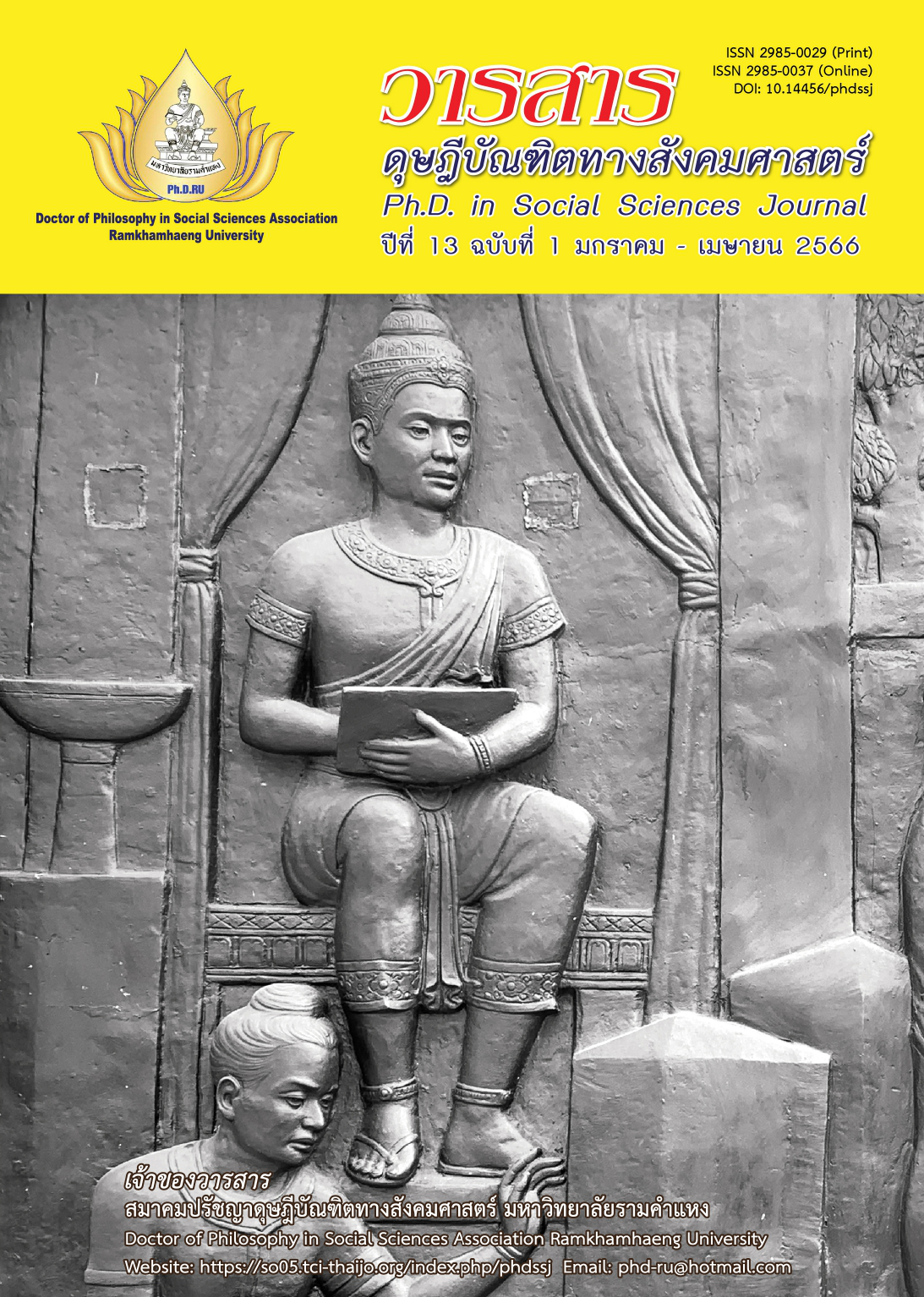Factors Affecting Volunteering of First Year High Vocational Certificate Students at Vocational Colleges Under the Office of the Vocational Education Commission in Krungthep Maha Nakhon
Main Article Content
Abstract
This research article aim to (1) the level of factors in the aspects of family relationship, human-environment relations, relationship with friends, relationship with society, attitude towards volunteer work, and the level of volunteering of first year high vocational certificate students at public vocational colleges under the Office of the Vocational Education Commission in Krungthep Maha Nakhon. (2) the causal relationship model of the factors and volunteering of the students. and (3) the direct and indirect effects of factors affecting volunteering of the students. The researcher conducted the research using a quantitative research method. by distributing 520 questionnaires. The statistics used in the research were descriptive statistics. and inferential statistics using Structural Equation Modeling (SEM) analysis using LISREL program.
The results of the research revealed that: The relationship factor of person and environment in Hypothesis 9 had the most influence on volunteerism, followed by the factor on family relationship in Hypothesis 7, had the greatest influence on volunteerism, equal to 0.39, which was a significant influence. Statistically significant at the 0.01 level and after using the package to check the consistency of the structural equation model. It was found that all indices passed the standard, Therefore, it can be concluded that the results of this analysis are consistent with the empirical data.
Article Details

This work is licensed under a Creative Commons Attribution-NonCommercial-NoDerivatives 4.0 International License.
Academic articles, research articles, and book reviews in the Ph.D. in Social Sciences Journal are author’s opinions, and not the publisher’s, and is not the responsibility of the Ph.D. in Social Sciences Journal Philosophy Association, Ramkhamhaeng University. (In the case that research is done on human, the researcher has to be trained in Ethics for Doing Research on Human Training and has to produce the evidence of the training).
References
Bagozzi, R. P., & Yi, Y. (1988). On the structural equations models. Journal of the Academy of Marketing Sciences, 16(1), 74-94.
Bandura, A. (1977). Self-efficacy: Toward a unifying theory of behavioral change. Psychological Review, 84(2), 191-215.
Bishop-Fitzpatrick, L. (2015). Social functioning in adults with autism spectrum disorder: The role of biological stress response and psychosocial stress. Doctoral Dissertation of Philosophy, University of Pittsburgh.
Cronbach, L. J. (1970). Essentials of psychological testing (3rd ed.). Harper & Row.
Erikson, E. (1963). Childhood and society (2nd ed.). Norton.
Field, A. (2005). Discovering statistics using SPSS. Sage.
Hair, J. F., Black, W. C., Babin, B. J. (2010). Multivariate data analysis (7th ed.). Prentice Hall.
Joreskog, K. G., Olsson, U. H., & Wallentin, F. Y. (2016). Multivariate analysis with LISREL. Springer.
Magnusson, D., & Endler, N. S. (1977). Personality at the crossroads: Current issues in interactional psychology. Lawrence Erlbaum Associates.
Maslow, A. H. (1970). Motivation and personality (2nd ed.). Harper & Row.
Miles, J., & Shevlin, M. (2001). Applying regression and correlation. Sage.
Ministry of Education. (2017). Education development plan of the Ministry of Education, No.12 (2017-2021). Author. [In Thai]
Office for National Education Standards and Quality Assessment (Public Organization). (2016). Supporting documents for operation certification 2016-2020. Author. [In Thai]
Office of the Education Council. (2009). Educational reform proposals in the second decade (2009-2018). Author. [In Thai]
Phillips, J. L. (1981). Piaget’s theory: A primer. W.H. Freeman.
Stevens, J. (1992). Appiled multivariate statistics for the social sciences (2nd ed.). Lawrence Erlbaum Associate.
Stevens, R. (2008). Erik H. Erikson: Explorer of identity and the life cycle. Palgrave Macmillan.
Sullivan, H. S. (1953). The interpersonal theory of psychiatry. Norton.
Valtonen, T., Hacklin, S., Dillon, P., Vesisenaho, M., Kukkonen, J., & Hietanen, A. (2012). Perspectives on personal learning environments held by vocational students. Computers and Education, 58(2), 732-739.


